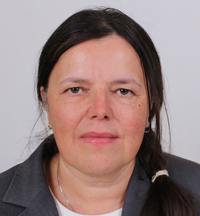NDnano seminar: Safe work with nanomaterials & health risks due to exposure to nanoparticles released by sparklers
Prof. Maja Remskar
Solid State Physics Department, Jozef Stefan Institute (Slovenia)
Tuesday, December 1
2:30 pm
100 Stinson-Remick
Abstract: Researchers working in the field of nanomaterials can be exposed to the release of nanoparticles risky for health, therefore preventive measures should be established for safe work in laboratories and in manufacturing plants. Because of a complete lack of regulation specific for nanoparticles, the safe levels in number concentration for some nanomaterials are only recommended and not demanded. Therefore, safe production and utilization of nanoparticles need our awareness. At the other side, exposure to nanoparticles in our daily life is in many cases unnecessary but it could be also dangerous for health. The use of different kinds of pyrotechniques like fireworks, are widely used for celebration of important public events, without knowing the effect of those explosions to the level of air pollution. Less colorful and very noisy effects of firecrackers are popular among teenagers, while sparklers, also called Bengal sticks, are liked by children and their parents due to their aesthetic and entertainment effects. While the precaution measures deal with safety rules regarding possible burns of skin or eyes, a strong emission of nanoparticles in the process of the burning of a sparkling wand is totally ignored and unregulated. I will present our results on the measurement of relatively high numerical concentrations of nanoparticles released during a six-minute long firework in Ljubljana and during combustion of two types of sparkling rods measured by scanning mobility particle sizer. Special properties of nanoparticles will be described and method for their detection in air.
Literature:
• M. Remskar, G. Tavcar, S.D. Skapin: Sparklers as a nanohazard : size distribution measurements of the nanoparticles released from sparklers. Air Quality, Atmosphere & Health, Vol. 8 (2015) 205-211.
• O. Creutzenberg: Toxic Effects of Various Modifications of a Nanoparticle Following Inhalation, Research Project F 2246, Dortmund/Berlin/Dresden 2013.

Prof. Maja Remskar is a physicist and senior scientist in the Solid State Physics Department at Jozef Stefan Institute, Slovenia, where she leads the Laboratory for Synthesis of Inorganic Nanotubes and Ropes. She is one of the pioneers in the field of nanotechnology in Slovenia and in general. In collaboration with co-workers, she has discovered different shapes of nanomaterials, especially of transition metal compounds, like co-axial inorganic nanotubes, nanowires, nanobuds and also “mama”-tubes. Her bibliography contains 115 original scientific articles, 8 chapters in books, and 5 international patents in the field of nanotechnology. Her Hirsch index is 24.